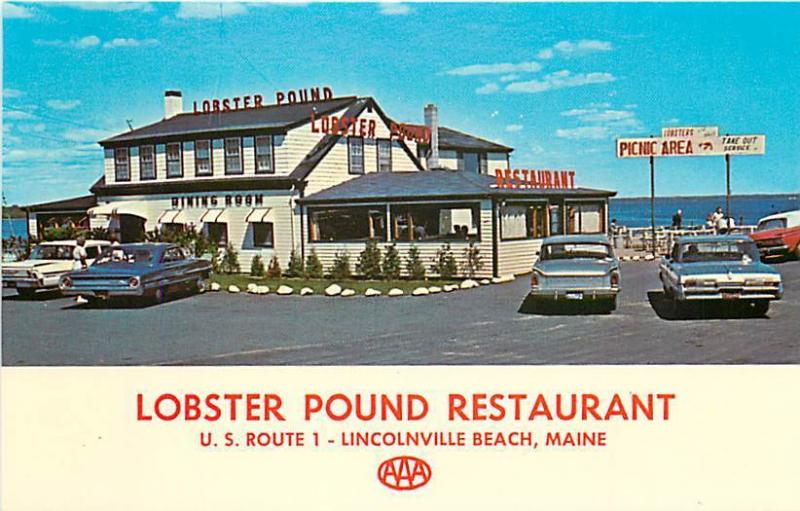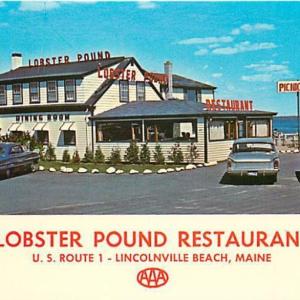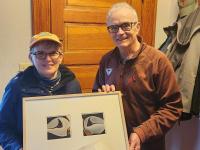This Week in Lincolnville: Reprise
“The poppies aren't blooming yet near the old cellar hole, though I know they must be up. But for their bright orange blossoms that wave through the tall grass in June you'd never know there'd been a house there at all. The poppies appear every spring near what was once some woman's door. I remember the house – it burned down more than ten years ago – and its last occupants, can still see the young daughter's pale face framed in the upstairs window one summer twilight, gazing out at the passing cars. I always think of her whenever the poppies bloom, imagine her longing to be away, for whatever adventure lay down the road. But the poppies had been there long before her family's brief tenancy.”
I first wrote about those poppies a quarter century ago; I still watch for them every spring, and reliably they appear as soon as my late tulips drop their petals. The poppies in front of my house put on a show of their own at the same time, sprawling crookedly, as poppy stems do, all over the other perennials. Eye-popping orange poppies are big show offs.
These poppies of my mine came from a friend, as so many of my plants did. They originally were growing in front of the house at 2453 Atlantic Highway, where Andy Young lives today. The Butterman family was living there in the 1970s and Judith dug up some of those poppies for me when I admired them.
Roses, the old-fashioned, hardy shrub roses are making themselves known everywhere these early summer weeks, filling the air with their scent. I greet each one in turn as it makes it appearance, mentally reciting its story.
The seawall along the Beach sidewalk is home to several, planted stealthily by renegade gardeners who’d watched the fancy hybrids DOT had dictated (and planted on the taxpayers’ dime) die one by one. We (the ad hoc Beach garden crew) had begged for rugosas, those hardy, salt-tolerant and robust roses that grow wild along the shore.
“No,” came the firm answer from the Department of Transportation landscape team. “They’re unruly, catch litter in their thorns, not suitable.”
So each time one of those hybrids died we stuck in a rugosa root; it doesn’t take much of a piece of root to quickly take off and fill in with lush foliage and fragrant single blossoms. They’re usually pink, but there are some white ones blooming down there now, from my yard, a white rugosa that I brought home as a tiny seedling from Alda Stitch’s magical perennial garden in Center Montville many, many years ago.
Someone, I don’t know who, contributed a double rugosa; it’s blooming this week, its blowsy, wildly fragrant deep pink blossoms spilling over the sidewalk.
CALENDAR
MONDAY, July 2
Schoolhouse Museum, 1-4 p.m., 33 Beach Road
TUESDAY, July 3Knitting Workshop, 4-6 p.m., Library
WEDNESDAY, July 4
Schoolhouse Museum closed.
Fireworks, 9:30, Lincolnville Beach
THURSDAY, July 5
Soup Café, noon-1 p.m., Community Building, 18 Searsmont Road
FRIDAY, July 6
Midcoast Music Together, 11 a.m., Library
Schoolhouse Museum, 1-4 p.m., 33 Beach Road
Every week:
AA meetings, Tuesdays & Fridays at 12:15 p.m., Wednesdays & Sundays at 6 p.m., United Christian Church
Lincolnville Community Library, open Tuesdays 4-7, Wednesdays, 2-7, Fridays and Saturdays, 9 a.m.-noon. For information call 706-3896.
Soup Café, every Thursday, noon—1p.m., Community Building, Sponsored by United Christian Church. Free, though donations to the Community Building are appreciated
Schoolhouse Museum open Monday-Wednesday-Friday, 1-4 p.m.
Bayshore Baptist Church, Sunday School for all ages, 9:30 a.m., Worship Service at 11 a.m., Atlantic Highway
United Christian Church, Worship Service 9:30 a.m., Children’s Church during service, 18 Searsmont Road
COMING UP
July 14: Strawberry Festival
July 23-27: Photography workshop
Lee Cronin, who is devoted to those Beach garden beds, from planting and tending the ones around the Welcome sign, the Robie Ames boat, planting the barrels on Frohock Bridge, and overseeing the volunteers who tend the other beds, is a long-time fan of Hidden Gardens in Searsport. She and I visited there several years ago, not long after Carla Brown, the owner, had died. Her husband sold us a rose he thought would do well at the shore, and it has. I greet it every spring as it has spread and thrived, and I remember Carla and her absolute dedication to her perennial nursery. It’s growing between several rugosas, but holding it’s own, a pretty and fragrant coral pink.
I’ve been introduced this spring to roses planted and/or tended by a woman I never knew. Jean French loved the roses she found growing on her husband’s ancestral property, a beautiful white double that starts out the faintest pink, then turns bright white. When I buried my nose in one a tiny bee bit it! Others she did plant, and kept them in check as these shrub roses tend to take over.
Another rose, a white single is one I rescued from Maplewood Cemetery. Back when Wally mowed there all summer, one grave was covered in a creeping rose that occasionally put out a flower, but mostly was cut off to the ground every couple of weeks by the relentless mower. I dug up a small piece of it and brought it home. Today it’s a huge thing, sprawling all around one corner of our house and covered in small, white blossoms for exactly one week a year.
Finally, a big part of my spring inventory of roses-I-love are the ones from my dad. He lived across from Shirt Tail Point in Camden for ten years back in the 70s and 80s, and had a vigorous large rose bush common to yards in that neighborhood at the time, the Washington Street rose I call it. He brought me a piece of it which still thrives. And then there’s the Goose River rose, one he admired during his daily round of golf. Naturally, a piece of that found its way to our yard as well.
Perennial plants grow and bloom over the spring and summer, die back every autumn and winter, and then return in the spring from their root-stock. You can count on hardy perennials to reliably show themselves every spring. Isn’t that the definition of a good friend? Oh, not the dying back part, but let’s not quibble. I still like the comparison.
Every spring gardeners make daily tours of their beds, checking in on this or that favorite to see if it’s back yet, if it survived the winter. Chances are, if you’re a gardener on any scale, you’re growing plants somebody shared with you.
The forsythia Myra Polan gave me sometime in the 1970s (she died in 1982) is thriving. Mine’s been growing defiantly in the gravel driveway since the day Myra gave it to me, in spite of her disapproval of the terrible spot I’d chosen. “It will never grow there,” she scolded.
I seem to have run into a number of opinionated, out-spoken older women in my life. I’ll even venture to suggest that there’s something about Maine rural life that attracts and even encourages the type. That leads me to think of the many thoughtful and quiet older men I’ve run into over the years here. I welcome comments, yay or nay.
When Lou, her actor-husband, passed away suddenly in Freeport on a March trip from NYC to Lincolnville for town meeting, Myra arranged with the funeral home to have his ashes sent to her in Lincolnville. When they arrived, mailman George Rankin brought them in and sat with her a few minutes. She told me she appreciated that. After he left, she dug a hole and buried Lou’s ashes within sight of her kitchen door. One of my most enduring memories of my dear friend Myra was driving down North Chester Dean Road towards her house, the last one on the road, and seeing her, rake in hand, filling in the winter’s potholes.
Hermeana “Hoppi” Graham was another one. Hoppi was the first woman to graduate with a degree in horiticulture from the University of Massachusetts, around 1940. She was nearly 70 when she moved here, to what was probably the oldest house in the area, just over the Lincolnville line in Northport, and began digging gardens in land long overgrown with brambles and alders. She had seedlings started in trays all over her house, visited nurseries and friends’ gardens for plants, and generally had dreams of extensive flower and vegetable beds that way outstripped her physical ability to carry out.
Hoppi lives on in my garden, invasively lives on, first with the creeping speedwell, a tiny-leaved ground cover with clear blue flowers that always makes me smile. It seemed to have disappeared for several years, but then re-appeared and is now vigorously covering large patches around the rocky paths I’ve built.
I blame Hoppi for my nemisis: Bishopsweed or goutweed, the terribly invasive plant that has spread along so many roadsides and untended places in town. Hoppi gave me a variegated variety, which she said wasn’t very vigorous and wouldn’t get out of hand. No sooner had she said that than the damn thing lost its mottled white and green variegation, turned totally green, and totally evil.
I won’t waste any more words on it here. I’ve heard of avid gardeners who sold their houses when goutweed appeared. To be sure, nasty goutweed was sneaking into my garden from all directions even as I took Hoppi’s gift of the “good” variety, and it was only a matter of time before it would snake around the roots of every other perennial in its path. See. I can’t stop bad-mouthing the stuff.
After Hoppi died in 1995, MBNA bought her property; her long, narrow acreage was surrounded on three sides by what was to become Point Lookout. We, her friends and family, held an impromptu memorial gathering in her gardens, and we all brought shovels. We could see the handwriting on the wall. Her dreams of lush gardens surrounding that wonderful old Cape would only live on in the gardens of her friends. We dug up everything we could; I got roots of her Elizabeth grapes, which to this day provide gallons of juice and jars of jelly every year. Within a few weeks the house had been knocked flat and carried away; Ginley Hall stands there today.
Finally, I’m growing a plant from a woman I never met, but I’ve reason to believe she was of the same tribe as the others. Helen Higgins Dickey Butler was her name, and she lived where the poppies come up every spring. Head south on Atlantic Highway, around the bend from the Black Horse Inn, and you come to a property that, for many years, held a large barn that slowly imploded over the years. That was the Butler farm, home of Helen and Benjamin Butler; it passed down to the Munroe family who rented it out. The last family to live in the house, before it burned in the 1970s, included the young girl dreaming at the window.
The barn’s been gone for a couple of years now, and this past month all sorts of land-developing activity is taking place there.
Many years ago Queen of the Prairie was growing in the roadside ditch of Helen’s farm, and because I admired it, Wally stopped and dug up a piece of it one day. This plant comes up every spring, grows over six feet tall, and flowers with pink plumes that look exactly like cotton candy. I moved it to what grandson Jack calls Grandpa’s grave, the perennial bed in the middle of our vegetable garden where his ashes lay.
So who was Helen Butler, whom I presume grew this wonderful plant in her garden? Born in 1850, probably on today’s Greenacre Road, she grew up, taught school in town, married James Dickey in 1873, was widowed three years later, attended Westbrook Seminary in Westbrook (supposedly the first co-ed college in the country), came back to teach here and in Belfast, married Ben Butler at the age of 34 and lived out her life with him at his farm on Atlantic Highway, overlooking Penobscot Bay. She died, childless, in 1927. He died a few years later, leaving his farm to Will Munroe who lived down the road.
I know all that and much more from the 169 letters Helen and her mother and friends exchanged between 1864 and 1884. Annie Munroe Allen, who came to own the house later, gave the Lincolnville Historical Society two shoeboxes from that house, one with the letters, the other with dozens of photos. Though none of the people in the pictures were identified, one that was in a group of high school students certainly looks like their teacher. I like to think that was Helen. What I do know for sure from reading her letters, is that Helen Higgins Dickey Butler lived by her own lights, in a time when women had few options or opportunities.
Fireworks at the Beach
Don’t miss the firework show at the Beach Wednesday, July 4, at 9:30 p.m., thanks to Don Heald and crew who have experience providing this type of display in previous years and in other locations in the area. The fireworks are being launched from the rocky shore next to McLaughlin’s Lobster Shack property, over the water, in a northerly direction. Please refrain from getting close to the crew working with the fireworks. There will be several volunteer fire fighters assisting to make sure everyone stays safe.
Don stopped by some of the homes and businesses along the beach to explain the plan knowing many with children, elderly, and pets who may not appreciate the noise that accompanies the fireworks. Maybe, says Erin Shirley at the Spouter Inn, “you may want to plan a road trip with Fido and Spot, inland or to Rockland!” And since Camden’s fireworks start at 9 you might be able to catch both.
Don sent this list of people and businesses who contributed to the fireworks:
Don French
Diane Lord - Beach Store
Rick McLaughlin - Lobster Shack
Rick Osgood - R-J Osgood & Son
Todd Young - Youngs Construction
Avery Heald
Greg Black - Accent Painting
Gene Flanagan - Viking
Grandma Betty Heald
Steve and Amy Hand
Briar Lyons - Center General Store
Mike Eugley - Mike's Align and Repair
Ben Hazen - Andy's Brewing
Justin Doan - Justin Electric
Danny and Susan hickey - Western Auto
And special thanks to Rick and Lynette McLaughlin for the use of their beach front and the Lincolnville Fire Department and Waldo County Sheriff’s office for helping make it a safe event.
Library
Tuesday at 4 p.m. the monthly knitting workshop with help from some patient and experienced dinners will be open to all.
The Library will be closed Wednesday in observance of Independence Day.
Friday, July 6, 11 a.m. Jessica Day and Midcoast Music Together welcomes all children infant to five years old and their families to join in singing, dancing and playing simple instruments.
Strawberry Festival
This year’s Strawberry Festival, sponsored by United Christian Church and held at the Community Building and church grounds will be Saturday, July 14, 9 a.m. to 1 p.m. The parade starts at 10, followed by music, children’s activities, strawberry shortcake, hotdogs and a puppet show. It’s always a great family day; don’t miss it!
A Week in the Life of Lincolnville
Well-known photographer Tillman Crane is organizing a week-long workshop for amateur photographers from around the country to gather in Lincolnville the week of July 23-27. Participants will go around town documenting everyday life in our town as a kick-off to United Christian Church’s Bicentennial year, 2020. It was 1820 when Joshua Lamb built the building, known as the Center Meeting House, where UCC now has its home.
Event Date
Address
United States


























